|
 5/5/2007
- The Annual Hungarian May Ball - A very special evening
benefitting AHF's 100th Anniversary programs and the Hungarian Scouts
of Washington! A very special evening that included 4 debutantes
from the metropolitan Washington area. This year's proceeds from the
black-tie affair were equally
shared to help cover the costs of the Hungarian Scouts participation
in the 21st World Scout Jamboree in England and the Federation's 2007
100th Anniversary programs. 5/5/2007
- The Annual Hungarian May Ball - A very special evening
benefitting AHF's 100th Anniversary programs and the Hungarian Scouts
of Washington! A very special evening that included 4 debutantes
from the metropolitan Washington area. This year's proceeds from the
black-tie affair were equally
shared to help cover the costs of the Hungarian Scouts participation
in the 21st World Scout Jamboree in England and the Federation's 2007
100th Anniversary programs.
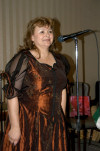 Former
AHF National Secretary and Ball Committee Chair, Erika Fedor, welcomed
guests that included representatives from the Hungarian Embassy, and
leaders from the Hungarian ScoutingAssociation,
AHF (including current and former President Atilla Micheller and Stefan
Fedor respectively), Former
AHF National Secretary and Ball Committee Chair, Erika Fedor, welcomed
guests that included representatives from the Hungarian Embassy, and
leaders from the Hungarian ScoutingAssociation,
AHF (including current and former President Atilla Micheller and Stefan
Fedor respectively),  Best-Selling Author and National Aviation Hall
of Famer Walter
Boyne, and Hungarian Parliamentarian Dr.
Janos Horvath. Mihaly "Misi" Meszaros, leader of the Hungarian
Scouts of Washington, thanked guests for their support and talked about
the upcoming jamboree and the need to support Hungarian Scouting. Best-Selling Author and National Aviation Hall
of Famer Walter
Boyne, and Hungarian Parliamentarian Dr.
Janos Horvath. Mihaly "Misi" Meszaros, leader of the Hungarian
Scouts of Washington, thanked guests for their support and talked about
the upcoming jamboree and the need to support Hungarian Scouting.
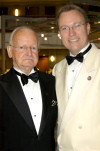 AHF
Executive Chairman, Bryan Dawson-Szilagyi, addressed the audience and
called attention to the 100th Anniversary of the founding of AHF and
the need for unity and a national identity: "In 1906, Hungarian
societies, institutions, and churches from every state in the union
came together to form a national federation to defend the interests
of Americans of Hungarian origin."He
added that, with the tragedies that befell Hungary over the decades,
AHF's mission had broadened to include support of people of Hungarian
descent on both sides of the Atlantic. AHF
Executive Chairman, Bryan Dawson-Szilagyi, addressed the audience and
called attention to the 100th Anniversary of the founding of AHF and
the need for unity and a national identity: "In 1906, Hungarian
societies, institutions, and churches from every state in the union
came together to form a national federation to defend the interests
of Americans of Hungarian origin."He
added that, with the tragedies that befell Hungary over the decades,
AHF's mission had broadened to include support of people of Hungarian
descent on both sides of the Atlantic. 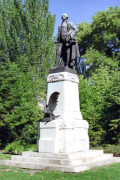 He provided a historic
perspective on AHF's 100 years of proud service to the community.From Budapest’s George Washington Statue in 1906 to the Louis
Kossuth Statue in the United States Capitol in 1990, to refugee re-settlement
efforts after WWII and the 1956 Hungarian Revolution, to tractors for
Hungarian farmers in Transylvania, to Scholarships for outstanding Hungarian
students, to Disaster Relief for Hungarian communities affected by Hurricane
Katrina and Transylvanian flooding, to educating the public and preserving
our heritage, he said AHF would continue to work to represent our common
interests. He provided a historic
perspective on AHF's 100 years of proud service to the community.From Budapest’s George Washington Statue in 1906 to the Louis
Kossuth Statue in the United States Capitol in 1990, to refugee re-settlement
efforts after WWII and the 1956 Hungarian Revolution, to tractors for
Hungarian farmers in Transylvania, to Scholarships for outstanding Hungarian
students, to Disaster Relief for Hungarian communities affected by Hurricane
Katrina and Transylvanian flooding, to educating the public and preserving
our heritage, he said AHF would continue to work to represent our common
interests.
 AHF
Co-President Frank Koszorus introduced Gabriella Koszorus-Varsa being
honored with AHF's highest award, the Col. Commandant Michael Kovats
Medal of Freedom for AHF
Co-President Frank Koszorus introduced Gabriella Koszorus-Varsa being
honored with AHF's highest award, the Col. Commandant Michael Kovats
Medal of Freedom for 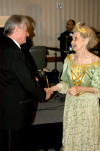 "her
lifetime accomplishments and dedication to the preservation of our Hungarian
heritage." Heralded as a master of portraits, figure compositions,
as well as sculptures. Ms. Koszorus-Varsa's depiction of the charge
of the cavalry during the battle of Charleston in ``Fidelissimus ad
Mortem'' is a magnificent master work and hung in the US Capitol. Ms.
Koszorus-Varsa and her husband, Colonel Ferenc "her
lifetime accomplishments and dedication to the preservation of our Hungarian
heritage." Heralded as a master of portraits, figure compositions,
as well as sculptures. Ms. Koszorus-Varsa's depiction of the charge
of the cavalry during the battle of Charleston in ``Fidelissimus ad
Mortem'' is a magnificent master work and hung in the US Capitol. Ms.
Koszorus-Varsa and her husband, Colonel Ferenc 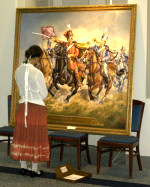 Koszorus
who was one of the great heroes of the Hungarian Holocaust, immigrated
to the United States in 1951 with their son, Frank. She had been commissioned
to paint some of the most important moments and persons in American
history. A supporter of AHF for many decades and responsible for the
design of some AHF stamps during its 1956 relief efforts and beyond,
AHF is honored to present her with our highest honor. Koszorus
who was one of the great heroes of the Hungarian Holocaust, immigrated
to the United States in 1951 with their son, Frank. She had been commissioned
to paint some of the most important moments and persons in American
history. A supporter of AHF for many decades and responsible for the
design of some AHF stamps during its 1956 relief efforts and beyond,
AHF is honored to present her with our highest honor.
 Reverend
Zoltan Kovacs said the blessing to commence dinner. After diner, Erika
Fedor introduced the 2007 Debutantes: Sári Bárczay, Olívia
Fedor, Krisztina Kárpáthy, and Andrea Kölus. All
are members of the Hungarian Scouts of Washington. KalmanMagyar's
phenomenal Continental
Dance Orchestra Reverend
Zoltan Kovacs said the blessing to commence dinner. After diner, Erika
Fedor introduced the 2007 Debutantes: Sári Bárczay, Olívia
Fedor, Krisztina Kárpáthy, and Andrea Kölus. All
are members of the Hungarian Scouts of Washington. KalmanMagyar's
phenomenal Continental
Dance Orchestra 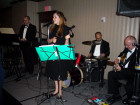 (Continental Tánc Zenekar) from New York
provided music and featured the amazing
vocals of Lisa
Apatini. The evening closed with a raffle that included fine Hungarian
Wines from Crafstman
Wines and art from József Domján, known as the most
important color woodcut artists in the Twentieth Century. This year's
table presenters included Barbara Lanciers whose "Leaves
with A Name," a play about her Hungarian grandmother, will
soon debut in Maryland. (Continental Tánc Zenekar) from New York
provided music and featured the amazing
vocals of Lisa
Apatini. The evening closed with a raffle that included fine Hungarian
Wines from Crafstman
Wines and art from József Domján, known as the most
important color woodcut artists in the Twentieth Century. This year's
table presenters included Barbara Lanciers whose "Leaves
with A Name," a play about her Hungarian grandmother, will
soon debut in Maryland.
Additional pictures (click for larger images)
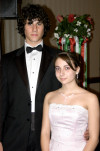 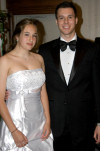 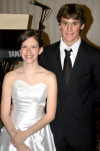 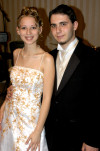
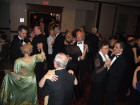 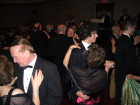 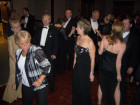
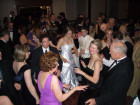 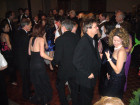 
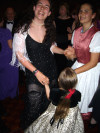 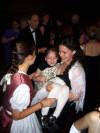 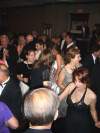 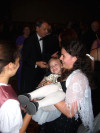
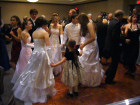 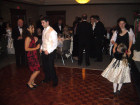 
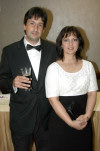 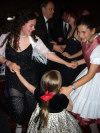 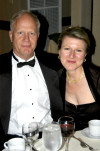 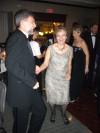
 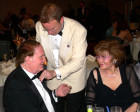 
  
 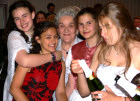 
  
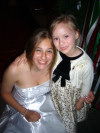 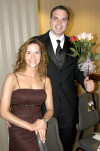 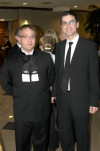 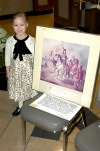
  
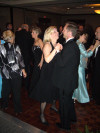 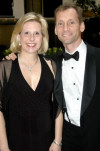 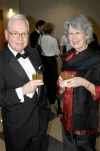 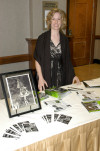
  
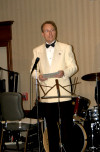 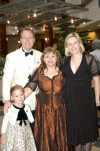 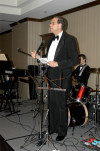 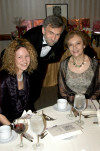
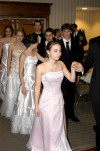 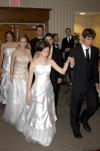 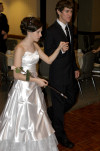 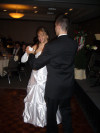
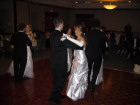  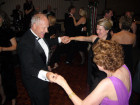
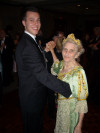 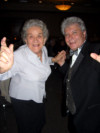 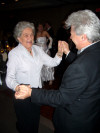 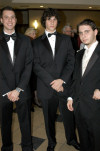
  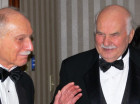
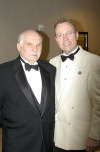 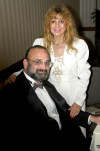 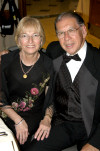 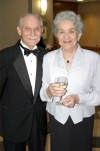
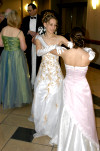 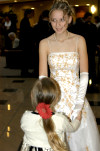 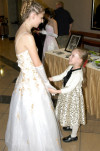 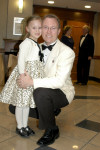
 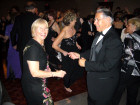 
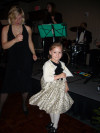 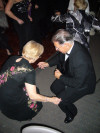 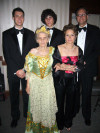
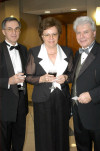 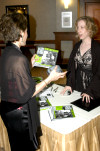
Photos by www.bryandawson.com
Previous Hungarian Charity Balls:
[<< Back to All AHF News]
[<< Back to All AHF News]
|
Tiszteletbeli Védnökök /
Honorary Committee
2007
BÁLBIZOTTSÁG / BALL COMMITTEE
- Erika Fedor (Ball Chairperson)
- Irén Högye
- Frank Koszorús Jr.
- Marianne Koszorús
- Judit Kölus
- Bryan Dawson-Szilágyi
- Tamás Téglássy
- Erszébet Tóth
Tiszteletbeli Védnökök / Honorary
Committee
(alphabetical)
- Mr. Jules Balogh
- Rev. Imre Bertalan
- Maj. General Robert Ivany
- The Hon. Tom Lantos
- Leslie Megyeri, Esq.
- The Hon. Anikó Gaál Schott
- His Excellency, the Ambassador of Hungary,
Dr. András Simonyi
- Mr. Steven J. Varga
AHF would like to express its sincere gratitude to the following Patrons,
Sponsors, Donors, and Raffle Sponsors whose support helped make the event
possible:
PATRONS (Fõvédnökök):
Mr. & Mrs. Stefan Fedor
Mr. & Mrs. Thomas Hilberth
Mr. & Mrs. László Hõgye
Mr. & Mrs. Charles Kolozsváry
Mr. & Mrs. Ákos Nagy
Mr. John Stetz
The Hungarian Reformed Federation of America
The William Penn Association
SPONSORS (Védnökök):
Mr. & Mrs. Theodore Boone
Dr. & Mrs. Paul Harsányi
Mr. & Mrs. Imre Lendvai Lintner
Mr. Attila Micheller
Mr. & Mrs. Sándor Murray
Hon. Anikó Gaál Schott
Mr. & Mrs. Louis Segesváry
DONORS (Adományozók):
Mr. & Mrs.Mihály Hõgye
Dr. Louis Kirschner
Ms. Borbála (Barbara) Kiss
Mrs. Agnes Miles
Mr. Ernest Paroczay
Mr. & Mrs. Tibor Pflum
Mr. & Mrs. Otto Raggambi
Previous Hungarian Balls Supported:
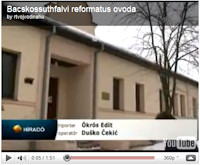 1. The Hungarian Reformed Church Nursery School in Bácskossuthfalva was founded in 2005, this is the ONLY such school recognized by Serbian authorities. Despite the recognition, Serbia has refused to extend any financial support. The school is under serious financial distress and your support is greatly needed and appreciated. See the VIDEO INTERVIEW ( 1. The Hungarian Reformed Church Nursery School in Bácskossuthfalva was founded in 2005, this is the ONLY such school recognized by Serbian authorities. Despite the recognition, Serbia has refused to extend any financial support. The school is under serious financial distress and your support is greatly needed and appreciated. See the VIDEO INTERVIEW ( magyarul). Vojvodina, an integral part of Hungary for over 1000 years, was awarded to the newly formed Yugoslavia
by the French at the "Treaty" of Trianon in 1920 when Hungary lost 2/3 of her territory and 1/3 of
her Hungarian population. Intimidation, large scale evictions and ethnic cleansing, emigration, and fear of self-reporting have official estimates of only 300-350,000 ethnic Hungarians
remaining in the province. Some, however, estimate this number to be double that
since many fear self-reporting as Hungarian exposes them to risk. [read more] about Vojvodina. magyarul). Vojvodina, an integral part of Hungary for over 1000 years, was awarded to the newly formed Yugoslavia
by the French at the "Treaty" of Trianon in 1920 when Hungary lost 2/3 of her territory and 1/3 of
her Hungarian population. Intimidation, large scale evictions and ethnic cleansing, emigration, and fear of self-reporting have official estimates of only 300-350,000 ethnic Hungarians
remaining in the province. Some, however, estimate this number to be double that
since many fear self-reporting as Hungarian exposes them to risk. [read more] about Vojvodina.
2. The Hungarian American Education and Cultural Preservation Fund (Amerikai Magyar Oktatási és Kultúrális Alap (AMOKA) to support a wide variety of programs from scholarships and internships that develop our future leaders to assisting local communities at home and abroad to preserve Hungarian schools and cultural institutions, language, history and traditions. In 2012, the Hungarian Scholarship Fund (HSF) / Magyar Ösztöndíjalap surpassed $400,000.00. Founded by AHF Board Member, Prof. Bela Bognar, the HSF supports students who are economically disadvantaged and live in Hungary and in the lands lost at the Treaty of Trianon which cost Hungary 2/3 of her territory, 1/3 of her ethnic-Hungarian population and vast natural resources. [read more and HELP!]
3. Tőketerebes (Trebišov)
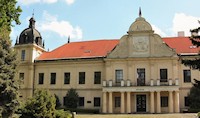 In 2013, the ball contributed funds toward the purchase of diagnostic equipment to support the Lung Ward of Trebišov Hospital (Tőketerebes Állami Kórház Tüdőosztály) in Eastern Slovakia (in former Upper Hungary). The Lung Ward treats numerous patients who contracted lung cancer or other lung-related diseases, following the Chernobyl disaster. Tőketerebes (Trebišov in Slovak) was home to the Andrássy family's residence. Built in 1786 by Count Csáky I., it was inherited by the Andrassy family who remodeled it in the neo-rennaissance style. Count Gyula Andrassy, the Kingdom of Hungary's last foreign minister, was born and raised here. Although in 1910 there were 2323 Hungarians and 2181 Slovaks living here (out of a population of 4708), by 2001, the ethnic makeup had changed significantly and reflects the decline of Hungarian populations in Slovakia and elsewhere in the Carpathian Basin due to many factors including widespread anti-Hungarian practices. Out of a population of 22,000 it had become 87% Slovak, 8.9% Roma, and only 1.7% Hungarian. In 2013, the ball contributed funds toward the purchase of diagnostic equipment to support the Lung Ward of Trebišov Hospital (Tőketerebes Állami Kórház Tüdőosztály) in Eastern Slovakia (in former Upper Hungary). The Lung Ward treats numerous patients who contracted lung cancer or other lung-related diseases, following the Chernobyl disaster. Tőketerebes (Trebišov in Slovak) was home to the Andrássy family's residence. Built in 1786 by Count Csáky I., it was inherited by the Andrassy family who remodeled it in the neo-rennaissance style. Count Gyula Andrassy, the Kingdom of Hungary's last foreign minister, was born and raised here. Although in 1910 there were 2323 Hungarians and 2181 Slovaks living here (out of a population of 4708), by 2001, the ethnic makeup had changed significantly and reflects the decline of Hungarian populations in Slovakia and elsewhere in the Carpathian Basin due to many factors including widespread anti-Hungarian practices. Out of a population of 22,000 it had become 87% Slovak, 8.9% Roma, and only 1.7% Hungarian.
4. The Claude Alexander Volunteer Program supporting Walter Reed Hospital was founded by Mike Healy in 2005 to help wounded U.S. Army soldiers being treated at Walter Reed Army Medical Center in Washington, DC. The program provides outpatients and their families with access to free off-post recreational events.
5. The Budapest-based Juvenile Cancer Foundation. There are approximately 300 children who are diagnosed with cancer in Hungary every year. The key objective of the Foundation is to build a reference 300-bed hospital and treatment center for children with cancer which would offer medical services ranging from diagnosis to sustainable treatment on the level of developed nations by highly qualified medical doctors, nurses and social workers to ensure the recovery of children.
6. The Hungarian Elementary School in Vaján, Slovakia. The school is located in a little ethnic Hungarian village of under 800 people, Vaján (or Vojany in Slovak after annexation following the Treaty of Trianon) in the Kassa District (Kosice) of Slovakia. [read more]
7. "Classrooms of the Future" - This program builds Educational Bridges between the US and Hungary and Promotes Science Education. Securing the support of Dr. Janos Horvath, Hungarian Member of Parliament, AHF worked with McIntosh Junior High School in Sarasota, Florida. The objective is to have students in Zalaber Elementary School in Hungary work directly on scientific programs with their US counterparts via laptop teleconferencing.
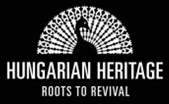 8. The Smithsonian Folklife Festival: Hungarian Heritage - Roots to Revival 8. The Smithsonian Folklife Festival: Hungarian Heritage - Roots to Revival
2013 also supported a unique opportunity for our community, the Smithsonian Folklife Festival. The Festival's theme was "Hungarian Heritage - Roots to Revival" and featured a wide spectrum of activities from Hungarian folk crafts to dance and music from various Hungarian communities, including Transylvania. [read more]
About the
Hungarian Scouts [more]
 The
Magyar Cserkészszövetség, the primary national Scouting
organization of Hungary, was founded in 1912, and became a member of the
World Organization of the Scout Movement in 1990. The coeducational Magyar
Cserkészszövetség has 7,198 members as of 2004. The
Magyar Cserkészszövetség, the primary national Scouting
organization of Hungary, was founded in 1912, and became a member of the
World Organization of the Scout Movement in 1990. The coeducational Magyar
Cserkészszövetség has 7,198 members as of 2004.
Scouting
in Hungary is maintained through Magyar Cserkészet Tanácsa,
the Council of Hungarian Scouting. There are two associations in this
national federation, Magyar Cserkészszövetség, the
Hungarian Scout Association, and Magyar Cserkészcsapatok Szövetsége.
Also serving Hungarian Scouts is Magyar Cserkészlány Szövetség,
the Association of Hungarian Girl Guides.
Hungarian Scouting was founded in 1909 under Austria-Hungary, and the
first Scout group in the dual monarchy, MCA-1912 HAS, was founded in Budapest
in 1910. Scouting started in the separate nation of Hungary in 1919, at
the end of World War I, when Austria and Hungary were divided. In 1920,
the magazine Magyar Cserkész ("Hungarian Scout") was
first published.
Hungary was a founding member of the World Scout Bureau in 1922 and later
was a founding member of the World Association of Girl Guides and Girl
Scouts, WAGGGS, which was in fact established in Parád, Hungary,
in 1928.
In 1924, at the World Scout Jamboree in Copenhagen, Hungarian Scouts
attending their first jamboree came third in the competition of the nations,
behind British and American Scouts. They were especially good at water
sports.
The first Hungarian National Jamboree in 1926 had 10,000 participants.
Hungary hosted the fourth World Jamboree in 1933 at the royal forest of
Gödöllo, outside Budapest, in which 26,000 Scouts from 54 nations
camped together. The camp chief was Teleki Pál, the member of the
International Committee who later became Prime Minister of Hungary. This
was the first time there was a Jamboree subcamp for Scouts taking part
in aviation. To celebrate the 60th anniversary of the fourth World Jamboree,
the Hungarian Scout Association hosted a fourth World Jamboree Memorial
Camp at Bélapátfalva, Hungary in 1993.
After World War II, the Külföldi Magyar Cserkészszövetség
started operating in the displaced persons camps in Germany and Austria
in 1948 as the Teleki Pál Scout Association, renamed in 1948 as
the Hungarian Scout Association. Scouting was well organized and popular
in Hungary until it was officially abolished by the Communist regime in
1948, but remained nascent underground...
[read
more on Wikipedia]
100 ÉVES A NEMZETKÖZI CSERKÉSZMOZGALOM
- MIT JELENT EZ SZÁMUNKRA? – Száz évvel ezelott egy afrikai szolgálatból
hazatéro angol katonatiszt elindította azt a nevelo mozgalmat,
amely mára a világ legnagyobb ifjúsági szerveztévé
fejlodött. Lord Baden Powell az ifjúság kalandvágyára
és romantikus hajlamára alapozta jellemnevelo rendszerét,
amellyel talpraesett, testben és lélekben egészséges, jellemes fiatalokat nevel. Az új mozgalom futótuzként terjedt szét a
világon. Magyarország az elsok között volt, ahol
nevelok és vezeto államférfiak – élvonalban
olyan kimagasló személyekkel, mint gr.Teleki Pál és Sík Sándor
– felismerték a cserkészet értékét.
Felismerték, hogy egy cserkészszellemu fiatalság
megalapozhat egy életképes, szilárd erkölcsi alapokon nyugvó,
sikeres társadalmat. Ezáltal a meglátás által
vezérelve, kidolgozták a magyar cserkészet rendszerét,
kiegészítve a Baden Powell-i alapokat egy jellegzetesen
magyar színezettel.
Sík Sándor fogalmazta meg legtömörebben, hogy a magyar cserkészet
célja “emberebb emberek, magyarabb magyarok” nevelése.
Hála a magyar vezetoség kiváló muködésének,
a két világháború között a magyar cserkészet – a trianoni csonkítás ellenére
– világviszonylatban kimagasló és elismert
szervezetté vált. Teleki Pált beválasztották
a világcserkészet legfelsobb vezetoségébe, a cserkész világtalálkozókon,
versenyeken a magyar kontingens az elsok között végzett,
és mindennek koronájaként Magyarországnak
jutott az 1933-as nagysikeru gödöllöi jemboree megrendezése.
Szinte látnoki ihlet által vezérelve, az akkori magyar
vezetoség olyan foglalkozási és nevelési anyagot,
u.n. “próbarendszert,” dolgozott ki, amely erkölcsi és gyakorlati tartalmán kívül
kihangsúlyozta a magyar hagyományokat és kulturális
értékeket. Ez, és a magyar cserkészet elsorangú
vezetoképzo rendszere, tették lehetové, hogy amikor a kommunista rendszer
betiltotta muködését, a magyar cserkészet zökkenomentesen
folytatódhasson külföldön. Az ötvenes évek
közepére már magyar cserkészcsapatok muködtek
nemcsak Nyugat-Európában, hanem Észak- és Dél-Amerikában, valamint Ausztráliában
is.
A Baden-Powell-i cserkészet és annak jellegzetesen magyar
változata olyan szerencsés induló alapot nyújtott,
amelynek segítségével a Külföldi Magyar
Cserkészszövetség immár 62 éve tesz eleget
jellemnevelo és magyarságorzo küldetésének.
De nyújtott olyan alapot is, amelynek segítségével
a kommunista rendszer bukását követoen azonnal megalakultak
a magyar cserkészszövetségek mind az anyaországban, mind a környezo országok magyarlakta
területein.
Ma már a Külföldi Magyar Cserkészszövetségen kívül a Kárpát-medence
minden országában muködnek magyar cserkészszövetségek,
összesen hét szövetség, amelyek közös
rendezvényekkel, programokkal és egymást támogatva
munkálkodnak az összmagyar fiatalság nevelésén és nemzeti öntudatának megorzésén. És így, egy angol katonatiszt által száz éve
elindított gondolat adta meg azt a keretet, amelyen belül
a négy évtizedes kommunista uralom alatt külföldön ápolhattuk külföldi fiataljaink magyar nyelvtudását
és nemzeti érzését, hogy aztán a szovjet
birodalom bukása után, országhatárokat áthidalva,
összekösse a Kárpát-medencében és a világ minden
táján élo magyar ifjúságot. - Dömötör
Gábor
[< back to all AHF news]
Join online!

|



